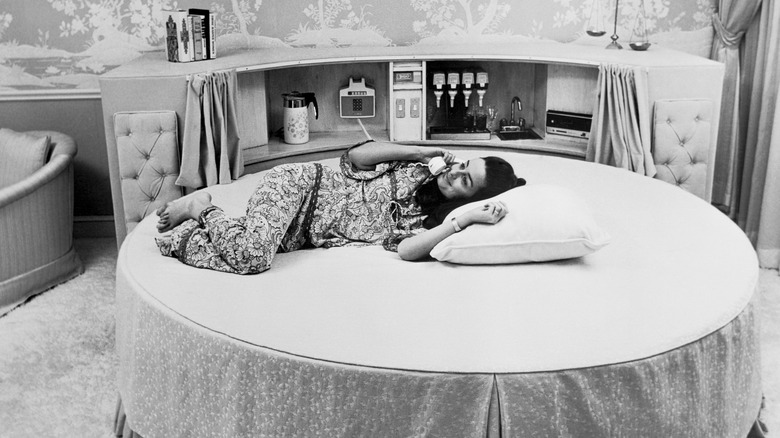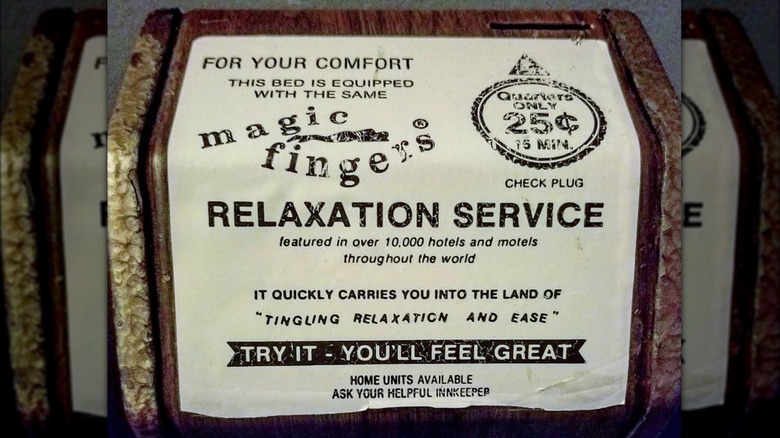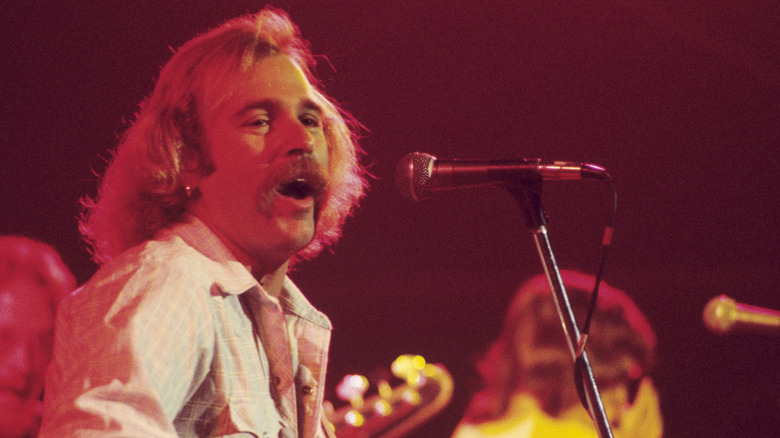Why You Rarely See Vibrating Beds These Days
There's nothing like a good night's sleep, and many of us have nothing like it, especially when sleeping away from home. It can be a waking nightmare trying to get comfortable enough to drift off when staying at a strange hotel. A good bed can make all the difference, at least for getting some shut-eye, and we've stuffed our mattresses with goose down, metal springs, water, and even air to try and get an ideal blend of comfort and support. Others have thought that a little bit of motion would be welcome. But unless you're an infant in the cradle or a sailor in a hammock on a preindustrial ship, moving beds aren't exactly a standard feature at home, let alone a hotel.
Once upon a time, entrepreneur John Houghtaling thought he could make good money providing hotels and motels with vibrating beds. In 1958, according to the Los Angeles Times, he engineered what he later dubbed the Magic Fingers by rigging a portable motor that could be hooked onto box springs. For the price of a quarter, guests could be soothed by the vibrations from the motor for 15 minutes at a time. Magic Fingers became a million-dollar business for Houghtaling and a standard feature in motels in the mid-20th century.
Unfortunately, machines stuffed with quarters are enticing to thieves, and by the 1980s, motels had more attractive luxuries. Houghtaling sold Magic Fingers, and the company traded hands as it declined and shifted to a home-order affair.
Vibrating beds predate Magic Fingers
John Houghtaling may have gotten rich off the idea of a vibrating bed, but he didn't invent the concept. According to The New York Times, vibrating beds have been around for centuries. The earliest ones ran on manpower; servants would literally rock the bed. The Industrial Revolution delivered alternate, and presumably less humiliating, sources of energy. By the 1950s, vibrating beds ran on electricity, and Houghtaling was working as a salesman for a company that sold such beds when he decided to go into business for himself.
What Houghtaling invented was a system that separated the motor driving the vibration from the bed itself. The units he sold before Magic Fingers had a box spring with a vibrator permanently built in. They were hard to move, cost a lot, and were prone to breakdowns. Houghtaling's innovation having a detachable motor made for a much lighter machine that provided a more pleasant and even rocking sensation than older models.
They linger on in pop culture
As of 2023, Magic Fingers machines are still sold for home use through American Entertainment. The Roadrunner Lodge Hotel in New Mexico still advertises rooms with Magic Fingers as a retro throwback. But vibrating beds are all but gone as a regular feature in motels. As places to stay on the road, motels have garnered a rather sleazy reputation, one that passed on to amenities like the Magic Fingers. Even the franchisees who lingered into the 21st century conceded that they were an anachronism, and began pulling out (per The Spokesman-Review).
But Magic Fingers and the vibrating bed still linger on in pop culture. The Steve Goodman song "This Hotel Room," performed by Jimmy Buffett, threw in a good-natured reference to them as a convenience, and similar asides were made in "World Famous Paradise Inn" and Kurt Vonnegut's book "Slaughterhouse-Five." Frank Zappa's "200 Motels" featured a song named after the machines. Mulder and Scully used one in "The X Files." And Bart and Lisa used the Magic Fingers to race beds at the Sleep-Eazy Motel in the 9th Season of "The Simpsons."


